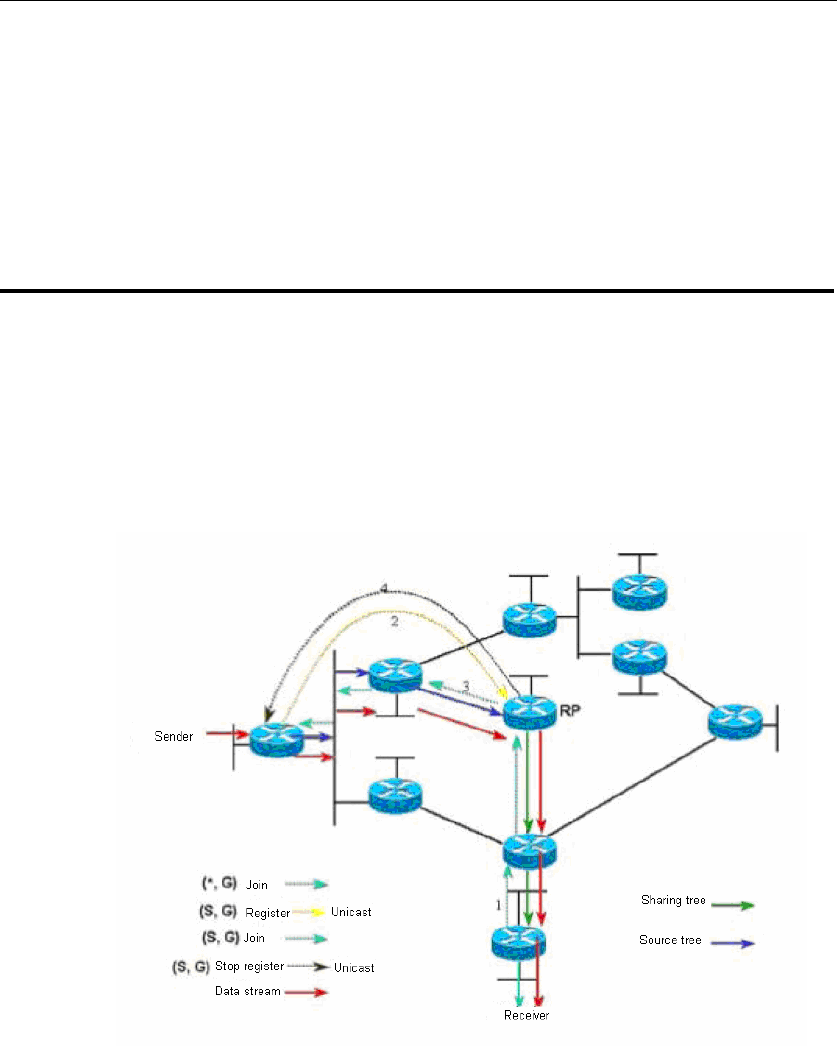
DES-7200 Configuration Guide Chapter 6 PIM-SM
Configuration
6-1
6 PIM-SM Configuration
6.1 PIM-SM Overview
The Protocol Independent Multicast Sparse Mode (PIM-SM) is a protocol
independent multicast sparse mode. In a PIM-SM domain, the PIM-SM-enabled
device sends the Hello message to discover adjacent PIM-SM devices and
selects the designated router (DR) in a multi-access network. The DR is
responsible for sending the join/prune message in the root node of the multicast
distribution tree direction for the direct connection group member, or sending the
data of the direct connection multicast source to the multicast distribution tree.
Join/Prune Mechanism of PIM-SM
The PIM-SM forwards multicast data packets by establishing a multicast
distribution tree. The multicast distribution tree is divided into two types: Shared
Tree that takes the RP of the group G as the root and Shortest Path Tree that
takes the multicast source as the root. The PIM-SM establishes and maintains the
multicast distribution tree with the explicit join/prune mechanism.
As shown in the above figure, when the DR receives a join request from the
receiving terminal, it will multicast a (*.G) join message hop-by-hop to the RP of
the group G to join the shared tree. When the source host sends multicast data to
the group, the source data is encapsulated into the registration message and
unicasted by the DR to the RP. Then the RP will forward the decapsulated data
packets to group members along the shared tree. The RP will send a (S, G) join
message to the first hop on the source direction to join the shortest path tree of
this source. In this way, the source’s data packets are sent to the RP without
encapsulation along its shortest path tree. When the first multicast data reaches


















